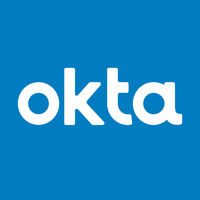
Okta OKTA
Last Price
52 Week Range
$76.35 - $127.57
Next Earnings Date
Dec 02 2025
Next Earnings Date
Dec 02 2025
Last Price
Financial Snapshot
Market Data
Market Cap | $14.16B |
EV | $12.24B |
Shares Outstanding | 176.90M |
Beta | 0.78 |
Industry | Software - Infrastructure |
Wall Street View
Analyst Rating | OUTPERFORM |
Analyst Target Price | |
Number of Analysts | 40 |
P/E 2026E | 23.86x |
P/Revenue 2026E | 4.91x |
Historical 3Y Growth Rate
Revenue | |
EPS | |
Operating Cash Flow | |
Free Cash Flow |
Forecasted 3Y Growth Rate
Revenue | |
EPS | |
Operating Cash Flow | |
Free Cash Flow |
Margins & Returns
Gross Margin 2026E | 81.54% |
Net Profit Margin 2026E | 6.33% |
ROE 2026E | 9.37% |
ROCE 2025 | 0.46% |
Dividends
DPS 2026E | $0.00 |
Payout Ratio 2026E | 0.00% |
Div. Yield 2026E | 0.00% |
DPS Last 3Y CAGR |
Price Dynamic
Price
%
1M
3M
6M
1Y
3Y
5Y
Peers
About Okta, Inc.

Okta, Inc.
OKTA
Sector
Technology
Industry
Software - Infrastructure
CEO
McKinnon, Todd
Employees
5,914
Website
www.okta.comIPO Date
2017-04-07
Headquarters
100 First Street, Suite 600, San Francisco, California, 94105, United States
Market data is sourced from S&P Global Market Intelligence. All insights and analysis are developed by Gainify. Copyright © 2025, S&P Global Market Intelligence. All rights reserved.
View Data ProvidersNEWSLETTER
Market data is sourced from S&P Global Market Intelligence. All insights and analysis are developed by Gainify. Copyright © 2025, S&P Global Market Intelligence. All rights reserved.
View Data ProvidersGainify provides tools and content designed to help users explore and understand the world of investing. All information available through our platform is for educational and informational use only. It is not intended as financial, investment or legal advice, and should not be treated as a recommendation or endorsement of any investment approach.
Our content is general in nature and does not account for your personal financial circumstances. Any investment decisions you make are your responsibility. We strongly recommend speaking with a licensed financial advisor or professional before acting on any information found on Gainify. Before using Gainify, please review our Terms of Service.
